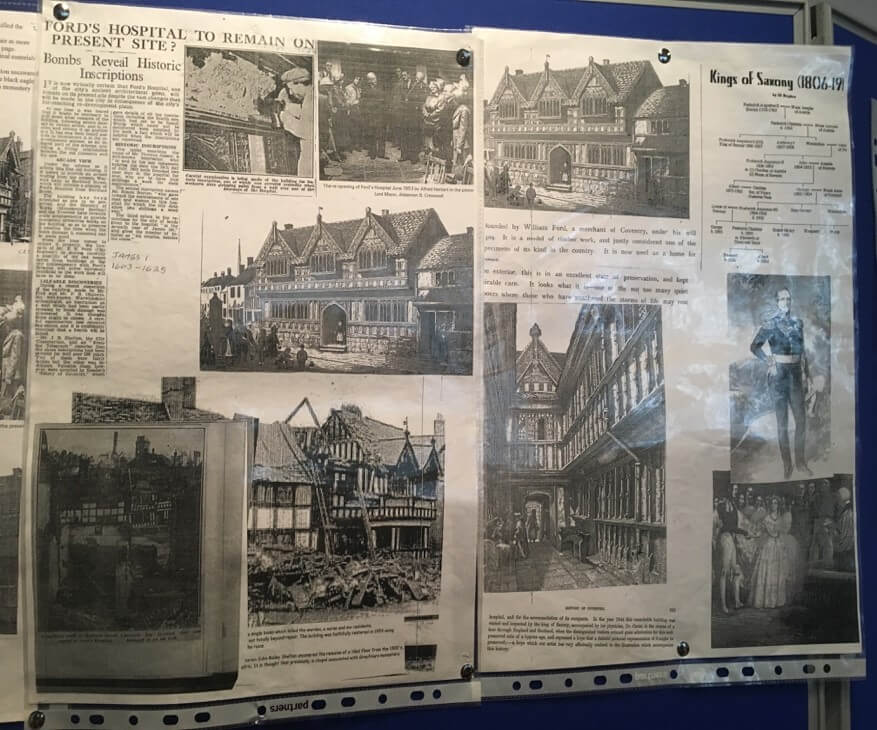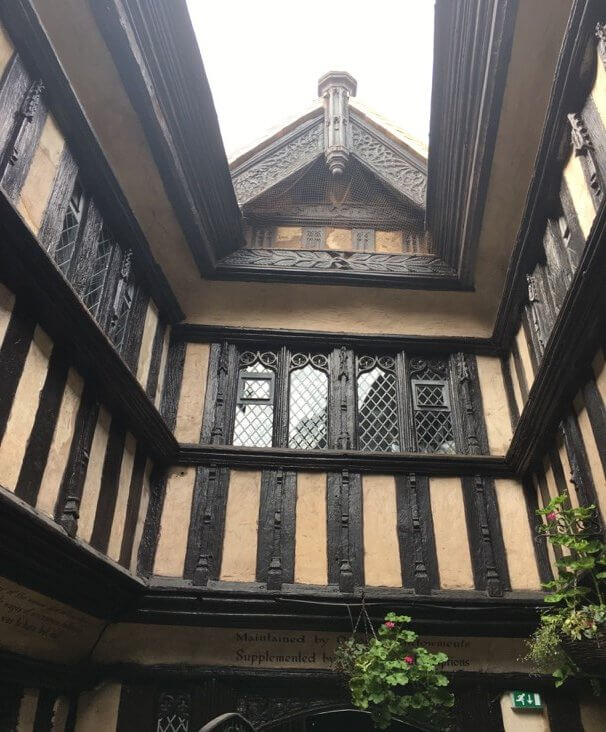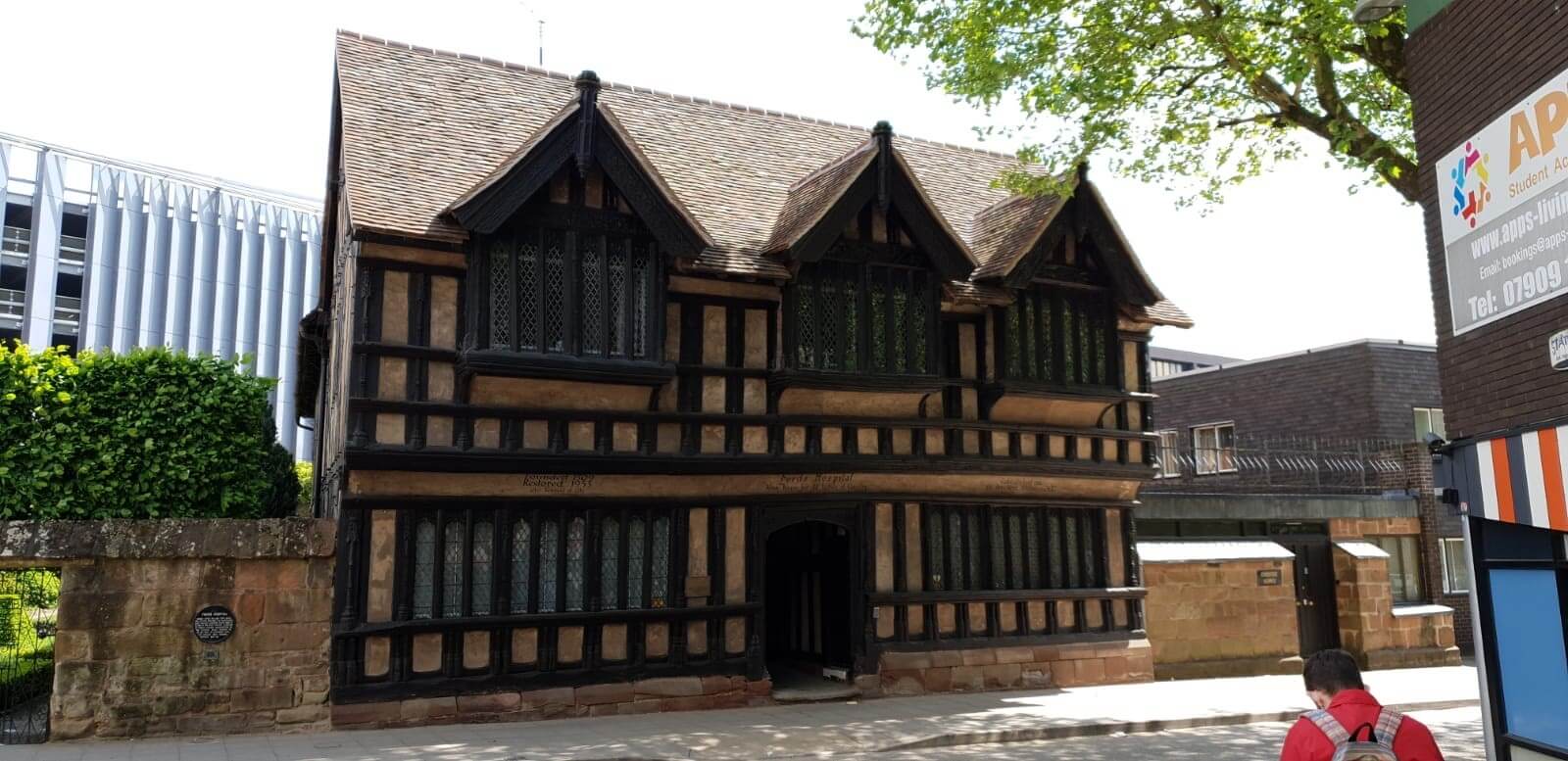Over the weekend, a diverse range of Coventry’s historic buildings and venues opened their doors to the public for the annual Heritage Open Days event. This annual celebration helps champion Coventry’s diverse culture, history and architecture. A major highlight of the event was the opening of Ford’s Hospital – one of the country’s finest half-timbered medieval almshouses and Coventry’s greatest hidden treasure.
Coventry’s Hidden Gem…
Tucked away on a quiet side street is one of Coventry’s greatest hidden treasures, an early 16th century half-timbered almshouse. Easily mistaken for a country cottage, the almshouse is a striking contrast to the grey and lifeless student accommodation opposite! Its heavy bargeboards, delicate tracery and stunning façade makes it one of the finest medieval almshouses in the country. As I keep referring to the historic building as an ‘almshouse’, you are perhaps wondering why it is known as ‘Ford’s hospital’. In the Middle Ages, the term ‘hospital’ had a slightly different meaning to our modern concept. Almshouses were originally hospitals or bede houses, as they aimed to provide hospitality and shelter for the elderly.
Founded by William Ford, a wealthy wool merchant and former Mayor of Coventry, it was originally built to accommodate six elderly women. Ford closely fitted the profile of an almshouse benefactor, as they were typically wealthy individuals with considerable power. For example, it is thought that the oldest medieval almshouse in existence was founded by the Bishop of Worcester in circa 990. However, during the dissolution of the monasteries many almshouses founded by the clergy were sold off to landowners or left to ruin. Ford’s Hospital is therefore extremely important and unique, as it managed to survive this culling by being separate from the church. It amazingly continues to be used as sheltered housing for Coventry’s elderly, which is why it’s not usually open to the public.
Burst Drains and Exploding Timbers!
Upon hearing that this fantastic building was being opened to the public, I immediately made the Heritage Open Day event a priority. My PhD research focuses on the reception of Coventry’s medieval architecture during the nineteenth century, so I had to had to have a closer look at this remarkable building’s interior designs and features. I should note here that you don’t need a BA in conservation studies or a PhD in medieval history to enjoy Ford’s Hospital. The best part about the Heritage Open Day events are their emphasis on inclusivity – everyone is quite rightly free to enjoy, explore and discover.
On the day of the event, a water main burst right outside the hospital and this created havoc in the street. I was concerned that the event would be cancelled, as the water was creeping dangerously close to the entrance doorway. However, it struck me that the building has survived even greater tragedies! During World War II, the building was badly damaged in a German bombing raid and it was feared that the building would have to be pulled down. The building remained in a ruin until 1953, until it was thankfully restored with as much of the original material as could be salvaged.
Stepping back in time…
Walking into the inner courtyard, I was greeted by the site of beautifully carved ornamental gables and richly decorated figure heads. I felt slightly overwhelmed seeing these striking architectural features, as I had been closely analysing sketches of them for a number of weeks. During the early nineteenth century, Gothic Revival architects published architectural pattern books which provided detailed examples of the nation’s finest domestic Gothic architecture. These sourcebooks were primarily targeted towards young architects, with the intention that they would incorporate the ancient features into their modern designs. Published in 1831, Augustus Charles Pugin’s ‘A Series of Ornamental Timber Gables’ offered examples of Coventry’s finest domestic medieval architecture. The Ornamental bargeboards from Ford’s Hospital are beautifully depicted in the publication and it was amazing to see these surviving features on the day.
The future
Turning into the first doorway on the right, I was greeted by a fascinating exhibition. Historic photographs, magazines and paintings exploring the rebuilding of the building were proudly displayed on three main exhibition boards. However, it was the sound of elderly voices that really caught my attention. Four elderly residents were sat around the exhibition discussing their memories of the building and it was heart-warming to hear about their love for the building. This palpable love for the building left me feeling confident that the building would continue to remain a prominent feature in the City’s landscape, and I’m already looking forward to re-exploring the building at the next Heritage Open Day event!


